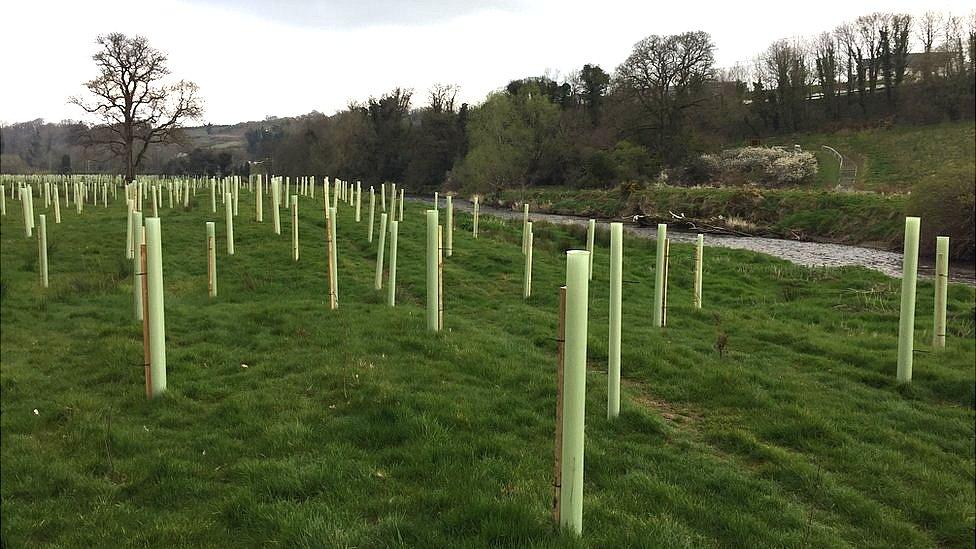Historic wood boosted by compensation cash from A6 road
- Published

Thousands of trees have been planted along the Faughan River
A conservation charity has used government compensation money to buy and expand an historic woodland.
The Woodland Trust lost some ground when it was vested for the scheme to dual the A6 Belfast to Londonderry road.
It used the six figure sum to purchase the privately owned Red Brae Wood on the banks of the Faughan near Burntollet.
Thousands of extra native trees have been planted to protect and enhance it.
Many are oak, but other varieties are being planted too
Northern Ireland has the lowest tree density in the UK - about 8% - much of it commercial forestry.
A range of trees including oak, birch and hazel have been planted along the river which has EU protection because of its importance as a habitat for Atlantic salmon as well as the otters which live along its fringes.
Dave Scott of the Woodland Trust said the charity was trying to replicate the ancient woodland that exists in small pockets along the Faughan Valley.
He said oaks were essentially "lazy trees" which benefit from the competition provided by faster growing native varieties.
Money for the purchase came from vesting compensation as part of the A6 road scheme
He said the oaks would be thriving within five years, helping to alleviate flood risk along the river, capturing carbon and providing habitat for wildlife.
The project is being run in conjunction with the Loughs Agency and NI Water which is providing some of the equipment.
Lionel Knobbs of the Loughs Agency said trees could help improve water quality and salmon habitat.
He said overhanging trees kept the water temperature down which prevented premature hatching of salmon eggs in spring and provided shelter from the summer sun.
The Faughan has EU protection due to its importance as a spawning ground for Atlantic Salmon
Fallen trees which end up in the river help provide protection from predators and slow flows during floods, helping to prevent damage downstream.
Planting like this has become common in recent years. It is part of an attempt to use natural capital to assist with things like flood alleviation, habitat improvement and carbon capture.
It has become known as "green infrastructure".
The Woodland Trust now has a number of pockets of woodland in the area. It's hoped eventually to link them all up using a network of paths the public can use.